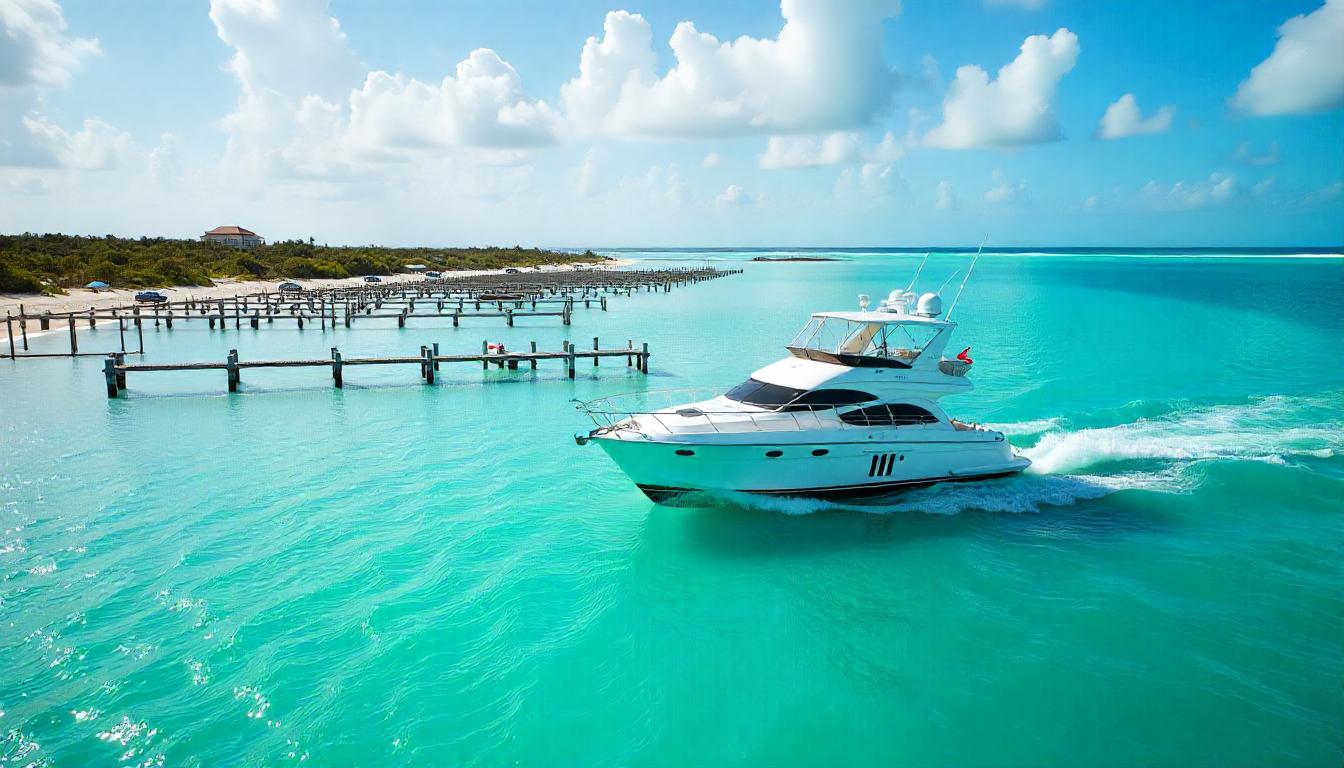Climate change is significantly altering popular yachting destinations in 2025, affecting everything from weather patterns to marine ecosystems, and challenging the yachting experience. As of Friday, May 23, 2025, at 10:54 AM +05, rising global temperatures, extreme weather, and sea level rise are reshaping where and how yachting enthusiasts can sail. These shifts threaten the appeal of iconic destinations while creating new opportunities in less traditional areas. This article explores the environmental impact on yachting, focusing on key destinations, and offers insights for adapting to these changes.
Changing Weather Patterns
Climate change is disrupting weather systems, making yachting climate change effects more pronounced. Warmer global temperatures lead to unpredictable weather, with trade winds becoming less reliable. For example, the Atlantic Rally for Cruisers has noted disturbed trade winds near the Canaries, forcing yachts to seek better weather windows for crossings. Additionally, blocking high-pressure systems are increasing, bringing intense storms further south, even to 30°N, with heavy rain and flooding risks. Consequently, sailors must adapt by closely monitoring forecasts and adjusting routes to avoid sudden weather shifts.
Rising Sea Levels and Coastal Impacts
Sea level rise, increasing by about 4mm annually, is a major climate impact on yachting spots. In the Caribbean, where 60% of coastal resorts are at risk, rising waters are eroding beaches and flooding marinas. For instance, popular spots like the Bahamas face “large-scale land loss,” reducing docking space and affecting local economies dependent on yachting tourism. Moreover, marinas are seeing higher costs for upgrades to combat flooding, which may increase docking fees. Therefore, yachting enthusiasts might face challenges accessing traditional Caribbean anchorages, pushing them toward alternative destinations.
Coral Bleaching and Marine Ecosystem Decline
The environmental impact on yachting includes the degradation of marine ecosystems, particularly coral reefs. Warming waters and ocean acidification are causing widespread coral bleaching in destinations like the Maldives and the Great Barrier Reef. For example, a 2014 marine heatwave in the Pacific led to fish migration, leaving sea lions without food and causing thousands of pup deaths. Additionally, plankton, vital to marine food chains, are sensitive to temperature changes, disrupting ecosystems. As a result, snorkeling and diving in these areas lose their allure, prompting yacht charters to seek new routes with healthier marine life.

Extreme Weather and Seasonal Shifts
Extreme weather events are becoming more frequent, intensifying yachting climate change effects. Hurricanes in the Atlantic have increased in intensity and rainfall since the 1980s, with projections of more Category 4 and 5 storms by 2100. In the Mediterranean, heatwaves—like the 45°C temperatures in Greece in 2023—forced early tourist departures and closures of attractions like the Acropolis. Furthermore, seasonal shifts are pushing yachting to shoulder seasons, as summer heat becomes unbearable in traditional hotspots. Consequently, destinations like Denmark and Ireland are seeing more interest as cooler alternatives.
Opportunities in New Destinations
While climate shifts in yachting areas pose challenges, they also open new opportunities. Melting Arctic ice is creating routes like the Northern Sea Route, offering adventurous yachting in previously inaccessible regions. Additionally, higher latitude areas like the North Atlantic are seeing fish stock increases, potentially attracting yachting tourism focused on fishing. Transitioning to this, regions less affected by heat, such as Canada’s coastal areas, may become new favorites. Therefore, yachting enthusiasts can explore emerging destinations to adapt to these changes.
Adapting to Climate Challenges
Adapting to global warming yacht destinations requires proactive measures. Yachts should be equipped with advanced navigation and weather monitoring systems to handle unpredictable conditions. For example, installing hybrid engines can reduce emissions, aligning with sustainability trends in yachting. Moreover, choosing destinations with sustainable practices, like those adhering to International Maritime Organisation standards, supports ocean health. Transitioning to this, charters can opt for shoulder season travel to avoid extreme weather. Consequently, these adaptations ensure safer and more responsible yachting experiences.
Conclusão
The impact of climate change on popular yachting destinations in 2025 is undeniable, with rising sea levels, extreme weather, and marine ecosystem decline reshaping the industry. Traditional hotspots like the Caribbean and Mediterranean face significant challenges, from eroding coastlines to bleached reefs, while new routes in the Arctic and cooler regions gain appeal. By adapting with better technology, sustainable practices, and flexible travel plans, yachting enthusiasts can navigate these changes. The future of yachting lies in embracing both the challenges and opportunities brought by a warming world.

 The Impact of Climate Change on Popular Yachting Destinations">
The Impact of Climate Change on Popular Yachting Destinations">
